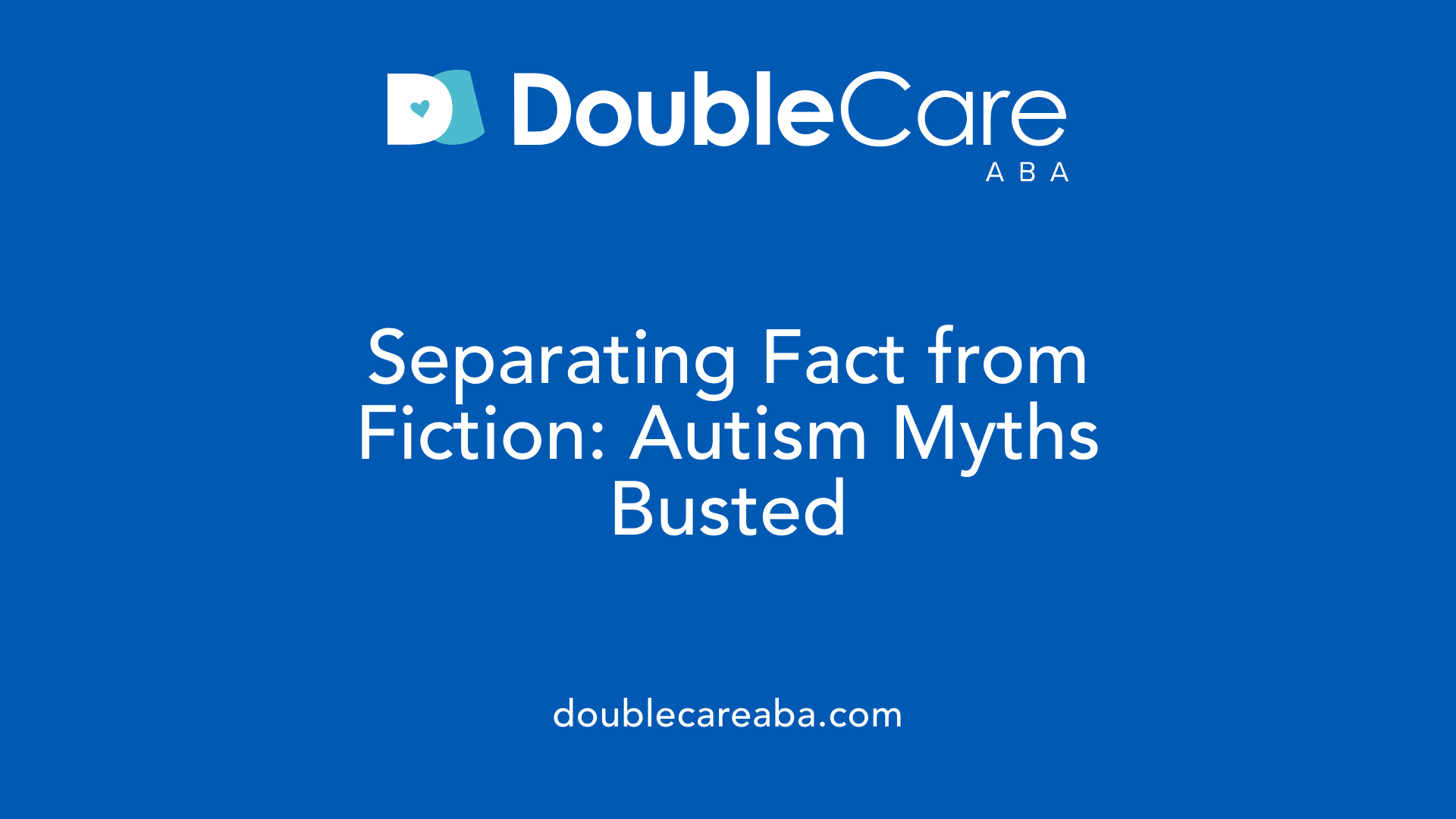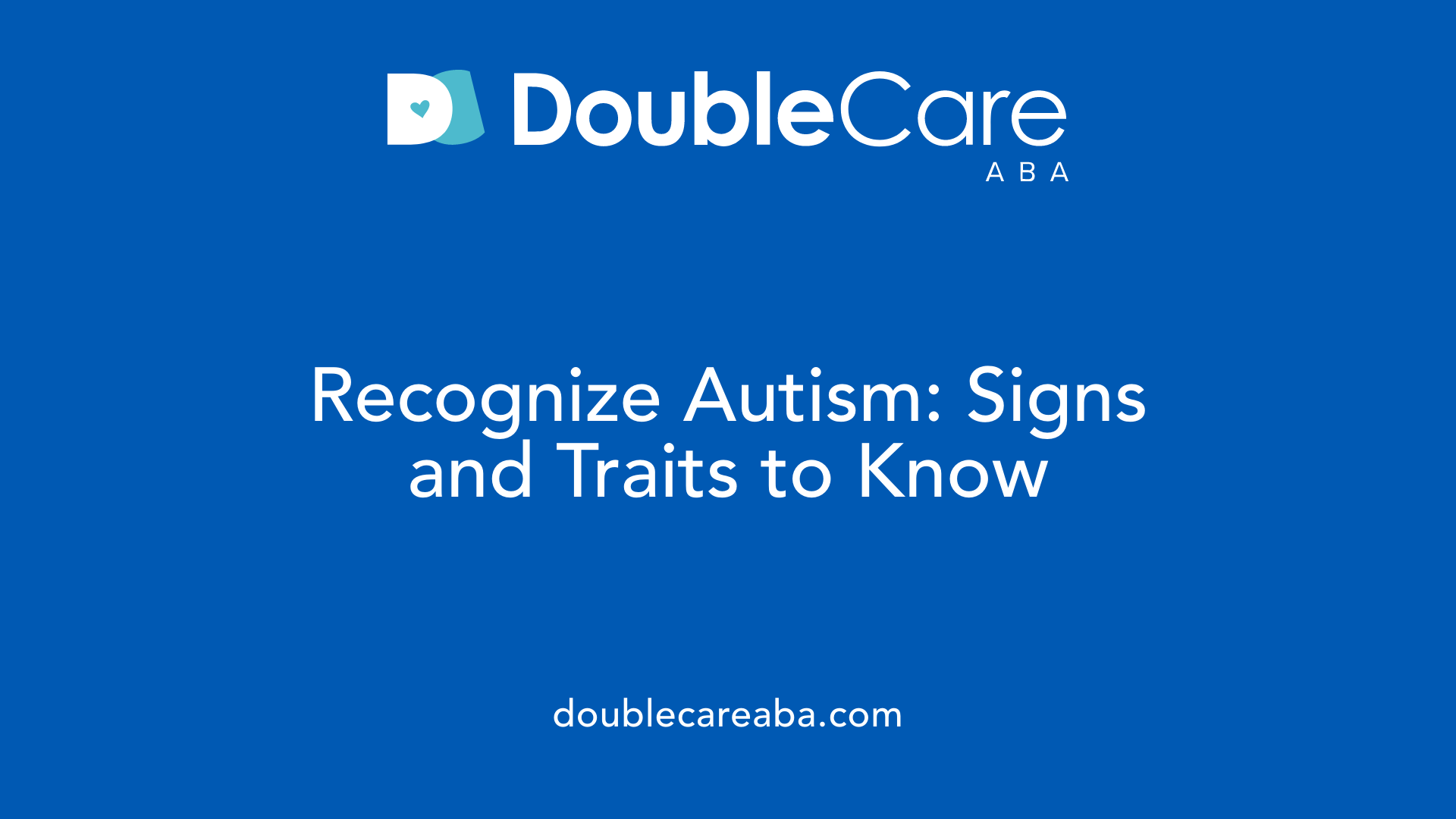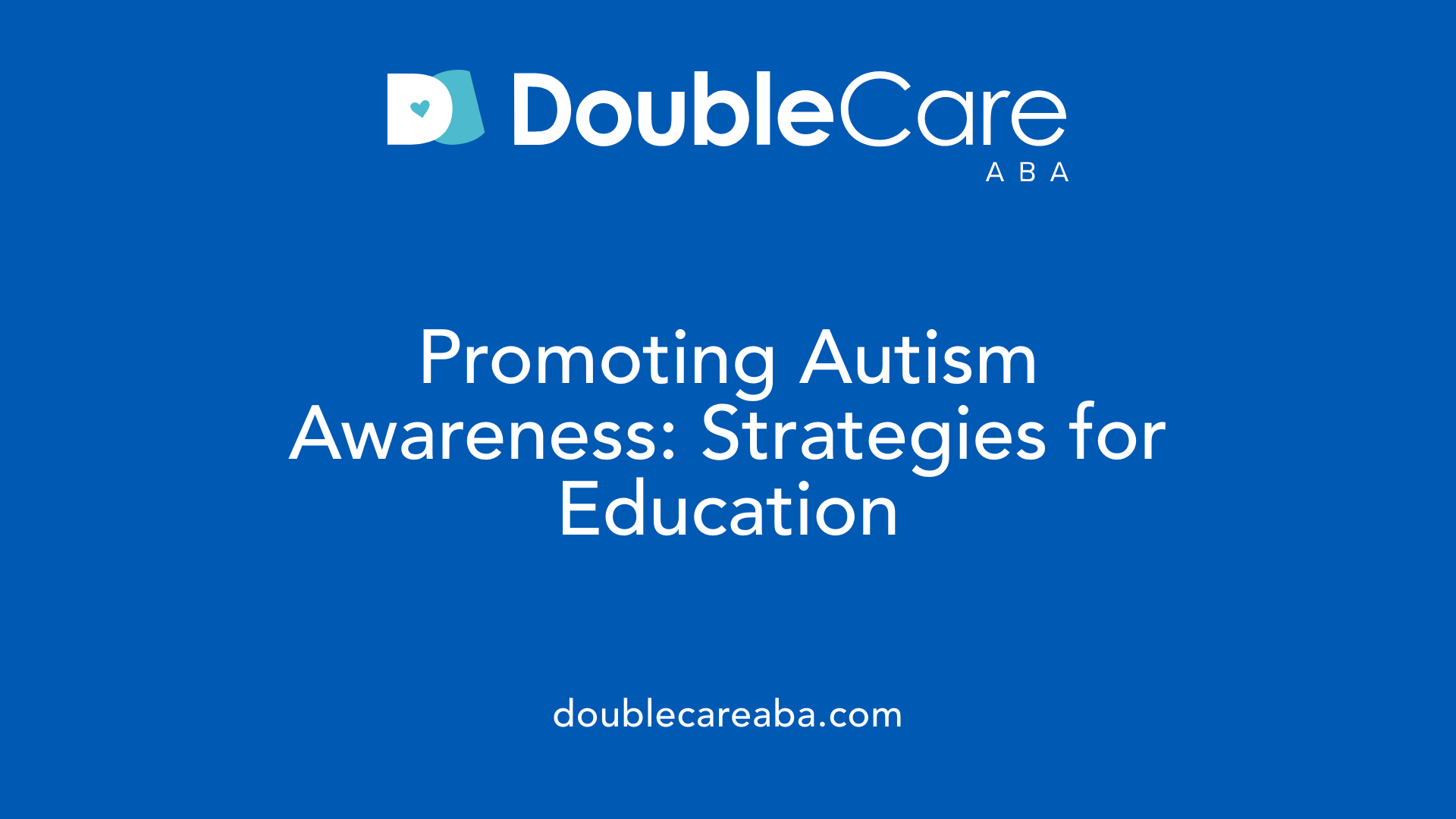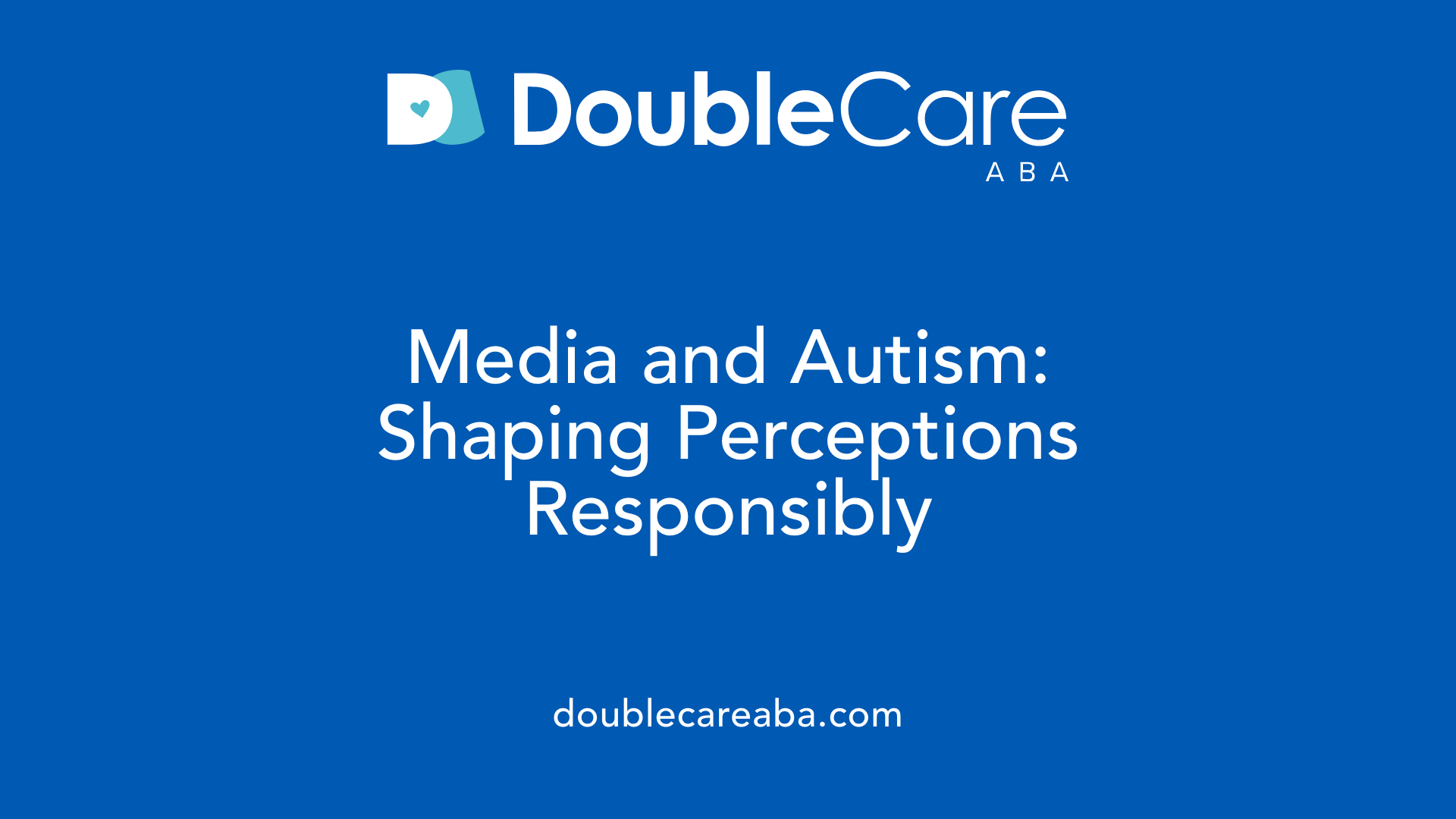Autism Stereotypes
Breaking Down Autism Stereotypes: Towards Greater Understanding and Acceptance

Understanding the Complex Reality of Autism
Autism stereotypes often oversimplify and distort the diverse realities of individuals on the spectrum, leading to misconceptions, stigma, and social exclusion. This article explores common myths, the influence of media, societal perceptions, and how education and research are working to dispel these misconceptions, fostering a more inclusive society.
Common Misconceptions and Myths Surrounding Autism

What are some common misconceptions and myths about autism?
Many myths and misconceptions about autism continue to circulate, often leading to misunderstanding and stigma. One widespread falsehood is that autism is caused by poor parenting or that vaccines, such as the MMR vaccine, lead to autism. Extensive research involving large populations has thoroughly debunked this myth, confirming that autism is a neurological condition present from birth.
Another common misconception is that autism is a disease that can be cured. In reality, autism is a lifelong spectrum condition. While support and interventions can greatly improve quality of life, there is no cure for autism.
People also often believe that all autistic individuals are savants—possessing extraordinary talents or intelligence. This is outdated and inaccurate. Autism exists across a broad spectrum with diverse abilities, and many autistic people have average or below-average intelligence. The stereotype that all autistic individuals are geniuses ignores the wide variation within the community.
Furthermore, some think autism affects emotional capacity, implying that autistic individuals do not experience feelings. On the contrary, autistic people experience the full range of emotions; they may display them differently and sometimes find it hard to express feelings in typical ways. They can and often do form meaningful relationships and enjoy social interactions, especially when supported and understood.
Dispelling these myths is essential in fostering awareness, acceptance, and a more accurate understanding of autism. Recognizing that autism is a spectrum with many faces helps promote empathy and support for autistic individuals in all aspects of life.
Recognizing the Signs and Characteristics of Autism

What are the signs and characteristics associated with autism?
Autism manifests through a variety of signs that can appear from early childhood and continue throughout life. One of the primary areas affected is social communication. Individuals may have limited eye contact, struggle to interpret body language, and find it hard to understand social cues. Speech delays are common, and some might use echolalia, which is repeating phrases or words. Difficulty forming and maintaining relationships is also typical.
Repetitive behaviors and a strong preference for routines and sameness are hallmarks of autism. These behaviors can include hand-flapping, rocking, lining up objects, or fixating on specific interests. Many autistic individuals are sensitive to sensory input such as bright lights, loud sounds, or certain textures, which can cause discomfort or distress. They often develop intense interests in particular topics or objects.
Because autism is a spectrum, symptoms and their severity vary widely. Some individuals may have significant challenges in communication and daily life, while others have milder symptoms and skills that allow for independence. Signs can be observed as early as infancy but sometimes are subtle or misunderstood, leading to later diagnoses.
Recognizing these traits early enables intervention and support that can greatly improve quality of life. It’s important to remember that every person with autism is unique and may show a different combination of these signs.
Educational Strategies to Combat Myths and Promote Awareness

What educational strategies can help dispel myths about autism and promote awareness?
Raising awareness and correcting misconceptions about autism require a variety of educational approaches. Public campaigns and school events play a vital role in reaching broad audiences. These activities can include autism acceptance days, such as wearing blue or participating in awareness walks, which foster visibility and understanding.
Inclusive education practices are essential. Visual supports like social stories help clarify social norms and reduce anxiety, while sensory-friendly spaces provide safe environments for autistic students to self-regulate. Teachers trained in autism awareness can facilitate compassionate, tailored support that dispels stereotypes.
Training for educators and healthcare professionals ensures that those working directly with autistic individuals have accurate, up-to-date knowledge. This training covers recognizing signs and understanding that autism exists on a spectrum, with wide variations in abilities and behaviors.
Incorporating autism-related literature, media, and guest speakers into school curricula encourages empathy and helps dismantle harmful myths. Reading stories from autistic individuals or hearing firsthand accounts can shift perceptions and foster acceptance.
Long-term initiatives are vital to sustain awareness. Community engagement through ongoing events, policy development, and collaboration with autism organizations ensures that understanding grows over time. Continual education helps combat stigma and promotes a supportive, inclusive environment for autistic individuals.
| Strategy | Examples | Purpose |
|---|---|---|
| Public awareness campaigns | Blue-wearing days, awareness walks | Increase visibility and challenge stereotypes |
| Inclusive education practices | Social stories, sensory spaces | Foster understanding and acceptance |
| Professional training | Workshops for teachers and healthcare workers | Equip support providers with accurate knowledge |
| Curriculum integration | Literature, guest speakers, community events | Promote empathy and share real-life experiences |
| Community engagement | Long-term awareness campaigns, collaborations | Maintain momentum and reinforce messages |
Addressing misconceptions and promoting acceptance through these educational efforts can significantly improve the social environment for autistic individuals, helping them flourish and reducing harmful stereotypes.
The Role of Media and Literature in Shaping Autism Stereotypes

How does media and literature influence stereotypes about autism?
Media and literature play a powerful role in shaping public perceptions of autism, but often their portrayals do not reflect the full reality of autistic individuals. Many movies, TV shows, and books tend to depict autistic characters through limited and exaggerated traits. For example, they might highlight stories of savant skills—such as extraordinary memory or mathematical abilities—or portray autistic individuals as morally superior or childlike.
These portrayals can create skewed images, either glamorizing or oversimplifying the challenges faced by many autistic people. Consequently, stereotypes like the 'genius' or 'freakish savant' are reinforced, which do not represent the spectrum’s diversity. Furthermore, media often lacks diversity by focusing mainly on white, male characters, thus underrepresenting women, racial minorities, and transgender individuals with autism. This limited representation can lead to misunderstandings and social exclusion.
However, some recent examples like Pixar’s short film “Loop” promote more realistic, inclusive stories that highlight individual strengths and everyday experiences. Promoting accurate storytelling through media helps combat harmful stereotypes, fostering a more understanding and accepting environment. Psychologists and advocates encourage creators to showcase the wide-ranging experiences of autistic people to foster respect and inclusion.
Societal Perceptions and Their Impact on Autistic Individuals
How do societal perceptions impact autistic individuals?
Societal perceptions play a crucial role in shaping the experiences of autistic individuals. When society holds inaccurate or exaggerated stereotypes—such as believing all autistic people lack empathy, possess special talents, or are socially unfit—these beliefs influence public attitudes and behaviors. Such misconceptions often lead to stigma and discrimination, which can affect autistic individuals' access to quality education, meaningful employment, and social opportunities.
This negative outlook can also foster social exclusion and mental health issues, including anxiety and depression. Autistic people might feel misunderstood or marginalized, resulting in behaviors like camouflaging, where they mask their traits to fit in. Social withdrawal and difficulty forming relationships are common consequences when societal acceptance is lacking.
Media plays a significant role in shaping perceptions. Often, portrayals emphasize extreme traits, like savant skills or lack of emotion, which do not represent the diversity of autism. Cultural factors and public awareness campaigns can either reinforce stereotypes or help challenge them. Promoting accurate, positive portrayals of autism, alongside education about the spectrum's diversity, is vital.
Creating inclusive environments focused on understanding and acceptance reduces stigma and discrimination. It encourages autistic individuals to participate actively in society, fostering their well-being and social integration.
How do behaviors like camouflaging and social withdrawal fit into societal perceptions?
Many autistic individuals adopt behaviors such as camouflaging or masking as responses to societal pressures or negative perceptions. These behaviors involve suppressing natural traits to appear more typical in social settings, often leading to exhaustion, stress, and mental health issues.
Similarly, social withdrawal can result from feeling misunderstood, judged, or rejected, which is a direct consequence of societal attitudes. These behaviors highlight the importance of societal acceptance and awareness.
What role do media, culture, and awareness campaigns play?
Media representation influences perceptions by either reinforcing stereotypes or promoting understanding. Negative or sensationalized portrayals amplify misconceptions, whereas accurate and diverse portrayals foster empathy.
Education campaigns and awareness programs are essential tools in changing societal attitudes. These initiatives can dispel myths, highlight the spectrum's diversity, and encourage inclusive policies. Building a culture of neurodiversity—valuing different ways of thinking and experiencing the world—can significantly reduce stigma and foster a supportive environment for autistic individuals.
| Aspect | Impact | Supporting Information |
|---|---|---|
| Stereotypes in media | Shapes public perception; can distort understanding | Movies often exaggerate traits like savant skills or emotional deficits |
| Discrimination | Limits opportunities; affects mental health | Biases in education, employment, and social interactions |
| Behavioral responses | Camouflaging and withdrawal | Masking traits to avoid stigma, leading to stress |
| Awareness efforts | Reduce misconceptions | Education, positive media, fostering neurodiversity |
Understanding and addressing these societal perceptions are vital steps toward creating a more inclusive and accepting environment for everyone on the autism spectrum.
Research and Academic Perspectives on Autism Stereotypes
Oversimplification of autism in stereotypes
Academic and research communities emphasize that autism stereotypes tend to reduce a complex spectrum of experiences into overly simplistic images. Media portrayals often depict autistic individuals as either savants with extraordinary talents or as socially withdrawn and lacking emotions. Such dichotomous representations ignore the diversity of autistic traits and the individuality of each person. Studies reveal that these overgeneralized images distort public understanding and can reinforce false beliefs about what autism truly entails.
Impact on well-being and social inclusion
Stereotypes significantly affect the mental health and social lives of autistic individuals. They can lead to stigma, bullying, exclusion, and reduced access to necessary support and services. Many autistic persons report feeling misunderstood or underestimated, which can result in feelings of isolation. Moreover, the pressure to conform to societal stereotypes often drives autistic individuals to camouflaging behaviors—masking their true selves to avoid negative judgments—that may cause stress and burnout.
Diversity within the autism spectrum
Autism is a highly heterogeneous condition, present in people of all genders, backgrounds, and abilities. Regardless of stereotypes, autistic individuals vary widely in their cognitive abilities, communication skills, interests, and sensory sensitivities. Some may have intense passions and excellent memory, while others may have significant support needs. Recognizing this variability is essential to providing appropriate understanding and support, and it challenges the misconception that all autistic people fit a single mold.
The importance of nuanced understanding
Recent research advocates for adopting a nuanced, respectful perspective that views autism through the lens of neurodiversity. This approach emphasizes accepting and celebrating differences instead of trying to fit everyone into stereotypical categories. Accurate, detailed information about autism helps challenge misconceptions, promote empathy, and support inclusivity. Educational initiatives, positive media representation, and community engagement are vital in fostering that understanding.
Strategies to challenge misconceptions
Efforts to reduce harmful stereotypes include promoting autism-friendly spaces, sharing personal stories from autistic individuals, and improving media portrayals to reflect real-life diversity. Educational programs targeted at schools and workplaces can increase awareness and acceptance. Additionally, advocating for policies that support neurodiversity and inclusion, alongside continuous research, helps combat misinformation. By emphasizing the spectrum's broad range, society can move towards a more authentic and supportive environment for autistic people.
How Addressing Stereotypes and Stigma Can Transform Lives
How can addressing stereotypes and stigma improve the lives of autistic individuals?
Challenging stereotypes and reducing stigma around autism can have a profound impact on the well-being of autistic people. When society moves toward greater acceptance and understanding, autistic individuals often experience more social inclusion, equal opportunities, and better access to education, employment, and healthcare.
Media portrayals play a significant role in shaping public perceptions. Accurate and positive representations of autism as a spectrum that includes diverse abilities and personalities can dispel myths. For example, understanding that autism does not equate to a lack of emotions or intelligence helps prevent harmful misconceptions.
Open diagnosis disclosure and authentic contact are effective ways to reduce prejudices. Personal stories and face-to-face interactions help break down barriers, fostering empathy and dispelling stereotypes like the false idea that all autistic people lack communication skills or have savant talents.
Creating supportive environments—such as sensory-friendly spaces and inclusive policies—further encourages positive social interactions. Educational programs and psychosocial support can teach understanding, patience, and acceptance to families, schools, and workplaces.
Lastly, recognizing autism as a natural variation within neurodiversity shifts the narrative from one of deficits to one of celebration of differences. This change empowers autistic individuals, boosting their confidence, mental health, and quality of life. Overall, addressing stereotypes and stigma is essential for building a society that respects and values neurodiverse individuals.
The Importance of Neurodiversity and Acceptance
Why is addressing stereotypes and promoting neurodiversity essential?
Challenging misunderstandings about autism is crucial for fostering a more inclusive society. Stereotypes often paint autistic individuals with broad, inaccurate strokes—such as the idea that they are all geniuses or devoid of emotion. These misconceptions can lead to bullying, social exclusion, and limited opportunities.
The neurodiversity movement advocates for recognizing autism as a natural variation of human neurobiology rather than merely a disorder to be cured. This perspective emphasizes diversity in thoughts, behaviors, and ways of experiencing the world.
Viewing autism through a neurodiversity lens encourages society to appreciate individual differences and strengths, rather than focusing solely on deficits. It promotes respect and understanding, helping autistic people participate fully in social, educational, and professional spaces.
This shift in perception not only benefits autistic individuals by reducing stigma but also enriches communities by valuing diverse perspectives. When we celebrate neurodiversity, we support mental well-being, foster acceptance, and create environments where everyone can thrive.
How do societal changes influence perceptions of autism?
Efforts such as positive media representation, educational programs, and inclusive policies transform public attitudes. They help dispel myths, reduce prejudice, and promote effective support systems.
By embracing neurodiversity, society shifts from a deficit-based view to one that recognizes unique strengths and contributions. This encourages more compassionate interactions and flexible attitudes, helping individuals with autism lead fulfilling lives.
Promoting societal change involves building awareness, fostering empathy, and encouraging respect for all neurological variations. Together, these actions move us toward a more inclusive and understanding world.
| Aspect | Traditional View | Neurodiversity Approach | Impact |
|---|---|---|---|
| Perspective | Autism as a disorder to fix | Autism as a natural variation | Increased acceptance and respect |
| Focus | Deficits and impairments | Strengths and differences | Enhanced social inclusion |
| Society | Exclusion and stigma | Inclusion and celebration | Better mental health and opportunities |
Fostering a Future of Understanding and Inclusion
Combating autism stereotypes requires a multifaceted approach combining education, media responsibility, societal change, and research. Building awareness and understanding not only dispels myths but also champions acceptance and neurodiversity. By fostering environments that embrace differences, we can support the well-being and dignity of autistic individuals, paving the way for a more inclusive and compassionate society.
References
- Debunking 8 Common Stereotypes of Autism
- Stereotypes of autism - PMC
- Autism myths
- Understanding Autism Beyond the Myths & Stereotypes
- Overcoming Stereotypes
- Signs that a child or adult may be autistic
- Understanding Stigma in Autism: A Narrative Review and ...
- Debunking 8 Autism Myths and Misconceptions
















